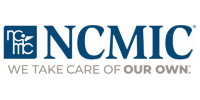The Women's Health Initiative Randomized Controlled Dietary Modification Trial ABSTRACT Context The hypothesis that a low-fat dietary pattern can reduce breast cancer risk has existed for decades but has never been tested in a controlled intervention trial. Objective To assess the effects of undertaking a low-fat dietary pattern on breast cancer incidence. Design and Setting A randomized, controlled, primary prevention trial conducted at 40 US clinical centers from 1993 to 2005. Participants A total of 48 835 postmenopausal women, aged 50 to 79 years, without prior breast cancer, including 18.6% of minority race/ethnicity, were enrolled. Interventions Women were randomly assigned to the dietary modification intervention group (40% [n = 19 541]) or the comparison group (60% [n = 29 294]). The intervention was designed to promote dietary change with the goals of reducing intake of total fat to 20% of energy and increasing consumption of vegetables and fruit to at least 5 servings daily and grains to at least 6 servings daily. Comparison group participants were not asked to make dietary changes. Main Outcome Measure Invasive breast cancer incidence. Results Dietary fat intake was significantly lower in the dietary modification intervention group compared with the comparison group. The difference between groups in change from baseline for percentage of energy from fat varied from 10.7% at year 1 to 8.1% at year 6. Vegetable and fruit consumption was higher in the intervention group by at least 1 serving per day and a smaller, more transient difference was found for grain consumption. The number of women who developed invasive breast cancer (annualized incidence rate) over the 8.1-year average follow-up period was 655 (0.42%) in the intervention group and 1072 (0.45%) in the comparison group (hazard ratio, 0.91; 95% confidence interval, 0.83-1.01 for the comparison between the 2 groups). Secondary analyses suggest a lower hazard ratio among adherent women, provide greater evidence of risk reduction among women having a high-fat diet at baseline, and suggest a dietary effect that varies by hormone receptor characteristics of the tumor. Conclusions Among postmenopausal women, a low-fat dietary pattern did not result in a statistically significant reduction in invasive breast cancer risk over an 8.1-year average follow-up period. However, the nonsignificant trends observed suggesting reduced risk associated with a low-fat dietary pattern indicate that longer, planned, nonintervention follow-up may yield a more definitive comparison. Ross L. Prentice, PhD; Bette Caan, DrPH; Rowan T. Chlebowski, MD; Ruth Patterson, PhD; Lewis H. Kuller, MD; Judith K. Ockene, PhD; Karen L. Margolis, MD; Marian C. Limacher, MD; JoAnn E. Manson, MD; Linda M. Parker, DSc; Electra Paskett, PhD; Lawrence Phillips, MD; John Robbins, MD; Jacques E. Rossouw, MD; Gloria E. Sarto, MD; James M. Shikany, DrPH; Marcia L. Stefanick, PhD; Cynthia A. Thomson, PhD; Linda Van Horn, PhD; Mara Z. Vitolins, DrPH; Jean Wactawski-Wende, PhD; Robert B. Wallace, MD; Sylvia Wassertheil-Smoller, PhD; Evelyn Whitlock, MD; Katsuhiko Yano, MD; Lucile Adams-Campbell, PhD; Garnet L. Anderson, PhD; Annlouise R. Assaf, PhD; Shirley A. A. Beresford, PhD; Henry R. Black, MD; Robert L. Brunner, PhD; Robert G. Brzyski, MD; Leslie Ford, MD; Margery Gass, MD; Jennifer Hays, PhD; David Heber, MD; Gerardo Heiss, MD; Susan L. Hendrix, DO; Judith Hsia, MD; F. Allan Hubbell, MD; Rebecca D. Jackson, MD; Karen C. Johnson, MD; Jane Morley Kotchen, MD; Andrea Z. LaCroix, PhD; Dorothy S. Lane, MD; Robert D. Langer, MD; Norman L. Lasser, MD; Maureen M. Henderson, MD JAMA. 2006;295:629-642. FOR FREE FULL TEXT CLICK ON THE LINK BELOW:




